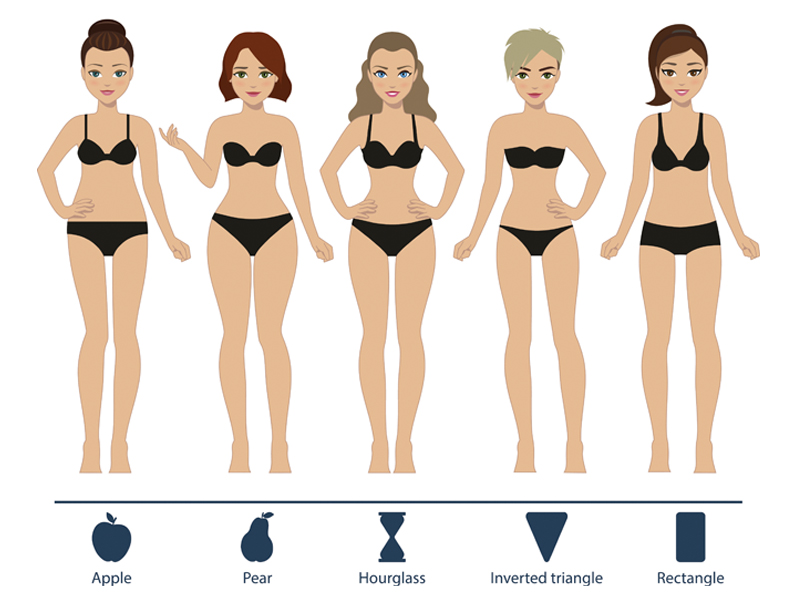Get Easy Health Digest™ in your inbox and don’t miss a thing when you subscribe today. Plus, get the free bonus report, Mother Nature’s Tips, Tricks and Remedies for Cholesterol, Blood Pressure & Blood Sugar as my way of saying welcome to the community!
What your body shape says about your cancer risk

Looking for an accurate way to gauge your cancer risk right now without going to your doctor’s office and getting pricked and prodded?
Mind you, I’m talking “risk” here, not diagnosis…
Well, all you have to do is stand in front of a mirror and look for the places on your body where you’re holding a little extra weight.
Now, just so you know, this has nothing to do with whether you consider yourself “fat” or “thin.” Because even if you’re technically “thin,” there may be a place on your body where excess fat tends to settle…
Maybe it’s your belly, your butt, your hips, your arms or your thighs. But wherever it is, it’s sending you a strong message about your future risk of developing the big C…
Body shape predicts cancer risk
A recent study published the British Journal of Cancer found that body shape could give Body Mass Index (BMI) a run for its money as the best indicator of weight-related cancer risk…
Researchers determined that holding excess weight around your middle increases your risk for obesity-related cancers like postmenopausal breast, colorectal, lower esophagus, stomach, liver, gallbladder, pancreatic, endometrial, ovarian and kidney cancers. And holding excess weight on your hips increases your risk of bowel cancer.
More specifically, researchers found that carrying an extra 11 cm of fat in your waistline increases your risk of obesity-related cancers by 13 percent. And carrying an extra 8 cm of fat around your hips increases your risk of bowel cancer by 15 percent.
Now, researchers have known for a while that having a high BMI is tied to an increased risk of cancer — 13 different types of cancer to be exact. But, based on this study, they believe where you hold your weight may be an even better reflection of how excess fat impacts your health and, most importantly, your cancer risk.
“To better reflect the underlying biology at play, we think it’s important to study more than just BMI when looking at cancer risk. And our research adds further understanding to how people’s body shape could increase their risk,” said Dr. Heinz Freisling, lead study author and scientist at the International Agency for Research on Cancer (IARC-WHO).
But you may still be wondering… why does your body shape make one lick of difference in your likelihood of developing cancer?
Well, researchers suspect it’s due to the way holding fat in certain areas of your body affects your hormones, insulin levels and inflammation levels. It creates a complicated web of interactions that can lead to a lot of health problems… including cancer.
Staying healthy
As you soak all of this information in, I have an important reminder for you…
Thin doesn’t always mean healthy. Thin people face their own unusual cancer-related risks. So don’t adopt a “by any means necessary” approach to losing weight.
Instead, embrace a healthy mindset and a healthy lifestyle. Love your body whatever its current size, and take care of it by eating fresh, whole foods, drinking lots of water and exercising regularly. This tends to be a better approach than fixating on the number you see on the scale.
And remember, regardless of your body shape and the cancer risks that come along with it, eating healthy and exercising are two of the best ways to lower your overall cancer risk. So don’t spend time worrying. Spend it being proactive and healthy.
Editor’s Note: Did you know that as many as 91 percent of oncologists would refuse conventional treatment if they faced a cancer diagnosis? They would never tell you this, but many would pursue natural treatments … to discover what these natural treatments are, and how you can fight and prevent cancer with vitamin C and other natural cancer fighters, click here for Dr. Michael Cutler’s exclusive guide to avoiding, fighting and surviving cancer!
Sources:
-
Where body fat is carried can predict cancer risk — MedicalXpress. Retrieved May 30, 2017.
-
Heinz Freisling, et al. “Comparison of general obesity and measures of body fat distribution in older adults in relation to cancer risk: meta-analysis of individual participant data of seven prospective cohorts in Europe.” — British Journal of Cancer, 2017.












